The mid-range segment is where the action lies in India's smartphone market. Xiaomi has had a near monopoly here by leading sales for a solid eight quarters. However, it is Realme that is the one to watch out for. Through a consistent release schedule of well-performing, great-looking products, the company has managed to carve out a niche for itself and amassed 9% market share. A remarkable feat in a place where new smartphones are launched nearly every other day and every player wants a slice of the pie. The Realme XT is yet another smartphone from the brand, and it comes a with a whole new shtick. A whopping 64MP camera makes for great marketing, but the bigger question is, does it make a positive improvement to the user experience?
Will the Realme XT bring enough to the table to fend off the competition and bolster Realme's market share? We find out in the Android Authority review of the Realme XT.
Realme XT review: The big picture
The Realme XT is a bold move for the company. When Xiaomi announced its intent to launch a 64MP smartphone, Realme countered by showing off a fully realized product and launching the 64MP-camera-toting Realme XT in India — well ahead of the Redmi Note 8 series. It also helps that the Realme XT is priced competitively.
If you thought that the battle for the mid-range was over, you're in for a surprise. Between Realme and the surprisingly competent Vivo Z series, it looks like the smartphone wars are just getting warmed up.
What's in the box
- Realme XT
- 20W charger
- USB-C cable
- TPU case
- SIM ejector tool
- Quick start guide
The box contents of the Realme XT covers essentials like a TPU case and a SIM ejector tool. A 20W charger is also included along with the requisite USB-C cable. The phone ships with a pre-applied screen protector, which ensures that you are ready to go as soon as you open up the box.
Design
- 158.7 x 75.16 x 8.55mm
- 183g
- Waterdrop notch
- Gorilla Glass
The Realme XT is a step up in design for the company. Realme has always had visually appealing designs with a focus on gradients, but the use of polycarbonate made the phones feel just a bit pedestrian when placed against recent Xiaomi hardware. Not so with the Realme XT.

This time around, the phone is wrapped in Gorilla Glass 5, both on the front and back. This alone has punched up the hand feel of the phone, as well as general build quality. The phone feels luxurious and the gradients absolutely shine. In our earlier Realme XT hands-on, we brought you images of the Pearl Blue variant of the phone. We've since gotten our hands on the Pearl White colorway, and the variant channels the look of the gorgeous Huawei P30 Pro.
The milky-white shade switches between a pale blue and an almost-pink pallet. Suffice it to say that it is a unique looking color for its category, and it's particularly fetching thanks to the glass back.

The rest of the design is fairly run-of-the-mill, with a split volume rocker on the left and a power button on the right. Placed within a metal mid-frame, the buttons have great tactile feedback and there's no hint of wobble.
Meanwhile, the bottom edge of the phone has a single speaker, a USB-C port, as well as a headphone jack. The phone makes use of an optical in-display fingerprint scanner, likely the same found on the Realme X. It is one of the fastest in the mid-range segment.
There's a similar design around front too. The phone doesn't stray too far from existing trends. Between the slim bezels, you will find an AMOLED display with a water drop notch that is just a bit smaller than the one on the Realme 5 Pro. It is functional, but doesn't really buck the trend.
Display
- 6.4-inches
- Super AMOLED
- 2,340 x 1,080 pixels
- ~402 ppi
- Gorilla Glass 5
- 19.5:9 aspect ratio
The display on the Realme XT is plenty good, and that's not just for the price. Its AMOLED panel is bright and looks fantastic. The default color temperature is nearly perfect, striking a great balance between cool and warm tones.

There is a slight boost in saturation, and this is particularly noticeable in blues and greens. I can't really complain, though, since it makes viewing media enjoyable. On that note, the phone does support Widevine L1, so you will be able to enjoy high-resolution content with ease.
I observed peak brightness levels around 430 nits, which is plenty bright for outdoor use. A bit more would've been nice, but this is par for the course for mid-range smartphones. I think the display on the Realme XT compares favorably against existing competitors, such as the Redmi Note 7 Pro. The use of an AMOLED panel means that you can get inky dark blacks on the phone, something that LCD-based phones can't boast of.
Performance
- Snapdragon 712
- 2 x 2.3GHz Kryo 360 Gold
- 6 x 1.7GHz Kryo 360 Silver
- Adreno 616 GPU
- 4/6/8GB RAM
- 64/128GB UFS 2.1 storage
- Dedicated micro-SD slot
The Realme XT runs a middle-of-the-road Snapdragon 712 chipset. Commonly found amongst mid-range smartphones, you can find it in competing hardware like the recently launched Vivo Z1x. This chipset is a mild upgrade over the Snapdragon 710 and focuses on slightly faster CPU performance. The GPU remains the same on both chipsets.
The Realme XT performs well and is a great example of a phone where the software is matched well to the hardware. Performance across day-to-day use is excellent and gives you no reason to complain. I found the animations to be a bit heavy handed, but that tends to be a point of concern with most, if not all, manufacturer skins.
The Realme XT heats up significantly around the camera when playing graphically intense games.
Gaming performance is in line with other mid-range phones. The Snapdragon 712's Adreno 616 GPU is good enough to run the latest games with relative ease. With PUBG pushed up to the highest graphics setting, the game looked plenty good. I did, however, notice the occasional frame drop. The phone warmed up significantly around the camera over the course of an intense gaming session. It was never uncomfortable, but I would think twice before buying the Realme XT if gaming was my primary use case.
- AnTuTu
- 3DMark
In terms of benchmarks, the phone comes very close to similar hardware by Vivo. The Realme XT managed 181,841 points in the CPU-focussed AnTuTu benchmark. This was about 3,000 points short of the 185,123 score of the Vivo Z1x. The 3DMark scores were closer at 2,095 points on the Realme XT vs the 2,100 of the Vivo Z1x. Similarly, the Basemark scores showed a noticeable difference.
Battery
- 4,000mAh
- 20W charging
The Realme XT's battery is pretty much the standard for this segment. A 20W VOOC 3.0 charger comes bundled in the box and I observed speedy charging times. A 30-minute charge brought the phone up to 51%. Full top-offs took just under 90 minutes.
Battery life was pretty good, though not the best. In both our video playback tests and browsing tests, the phone fell a bit short of the Realme 5 Pro and similarly-specced Xiaomi competition. Regardless, you won't find it hard to get through a full day of use with ease. Additionally, stand-by times are fantastic and the Realme XT barely sips on battery when you are not using it.
Software
- Android Pie
- Color OS v6.0.1
Our love-hate relationship with Color OS continues on the Realme XT. The visual identity is consistent with what we saw on the Realme 5 series. That said, I'm still not a fan of the extraneous use of white space in the interface.
It's the same old story with bloatware. Sure, these unwanted apps can be uninstalled, but to have almost an entire pane of pre-installed applications is pushing it. The phone continues to have Realme's Hot Apps folder, which refreshes a list of recommended apps every time you open it. This cannot be removed. Refreshing the folder doesn't take too long, but it uses cellular data or WiFi to pull in updates. Be mindful if you're on a metered connection.
Color OS offers good customization options, but bloatware continues to be a concern.
Truth be told, there is little to add here. The software experience is nigh identical to that on the 5 series, and has the same customization options. I particularly like the ability to customize the gestures exactly the way I want them. Of course, you can also toggle on the virtual keys.
Since the time of publishing, the phone has got a number of updates that have brought bug fixes and security updates. The Realme XT is now running the December 2019 security update with the latest patch adding in quality of life features like the ability to switch dark mode from the notification bar.
Camera
- Rear Cameras
- 64MP Samsung ISOCELL GW1 sensor, f/1.8
- 8MP Ultra-wide camera (119 degrees)
- 2MP macro camera
- 2MP depth sensor
- Front Camera:
- 16MP
- 4K, 30fps
There's a lot going on with the cameras on the Realme XT. Two and even three cameras are now commonplace, but the company is making a push for a quad-camera set up across the portfolio. The star of the show here is the primary sensor. The 64MP Samsung ISOCELL GW1 sensor is capable of capturing 64MP shots. By default, the camera outputs 16MP pixel-binned images, and if our tests have anything to say, that's definitely the sweet spot for this sensor. More on that in a bit.
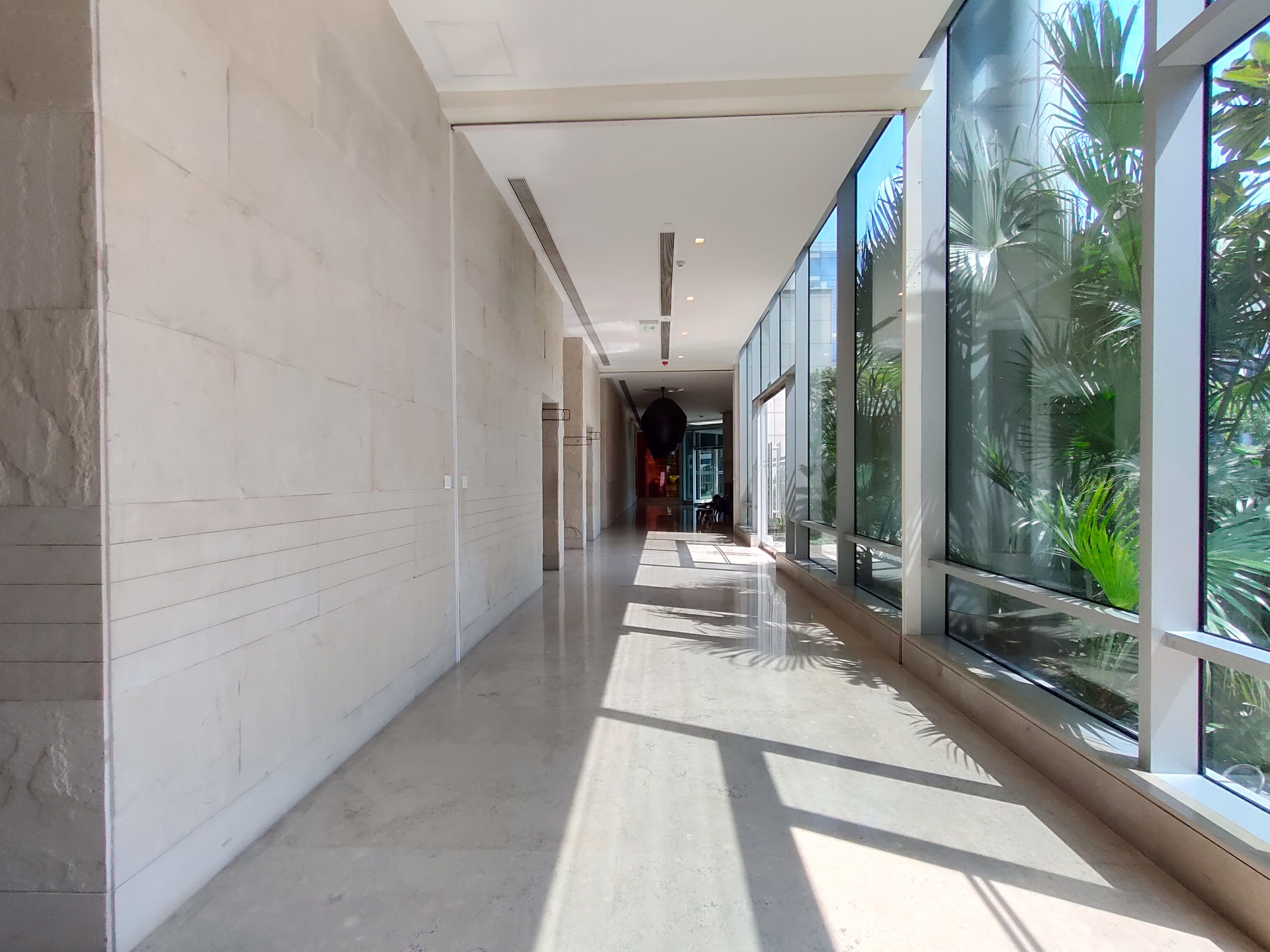 Realme XT camera sample day light Realme XT camera sample wide angle
Realme XT camera sample day light Realme XT camera sample wide angle 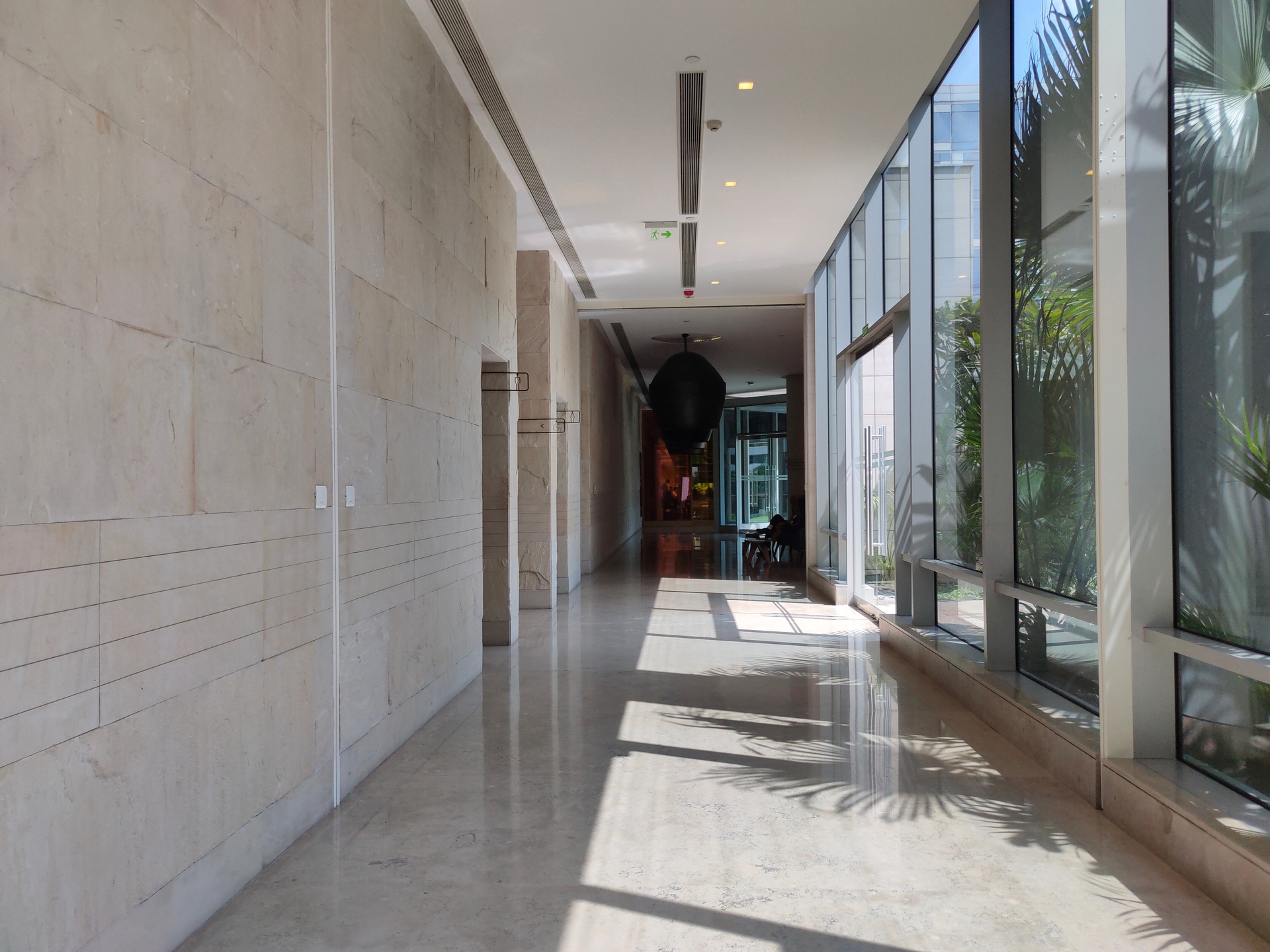
Standard shots out of the camera look pretty good. While I did notice a bit of noise when pixel-peeping, images in ample lighting are perfectly good to look at. The dynamic range is fairly decent too, and the phone does a serviceable job at maintaining highlights and pulling details from shadows. While the default mode boosts saturation just a smidgen, you can push it even further by using the Chroma Boost option. The mode works in a similar fashion to HDR and, as a result, gives you a slightly wider dynamic range too.
The wide-angle camera applies distortion correction which means results are cropped a bit. You can't toggle off this option. The dynamic range in wide-angle shots isn't great, and results in anything less than bright light are noisy.
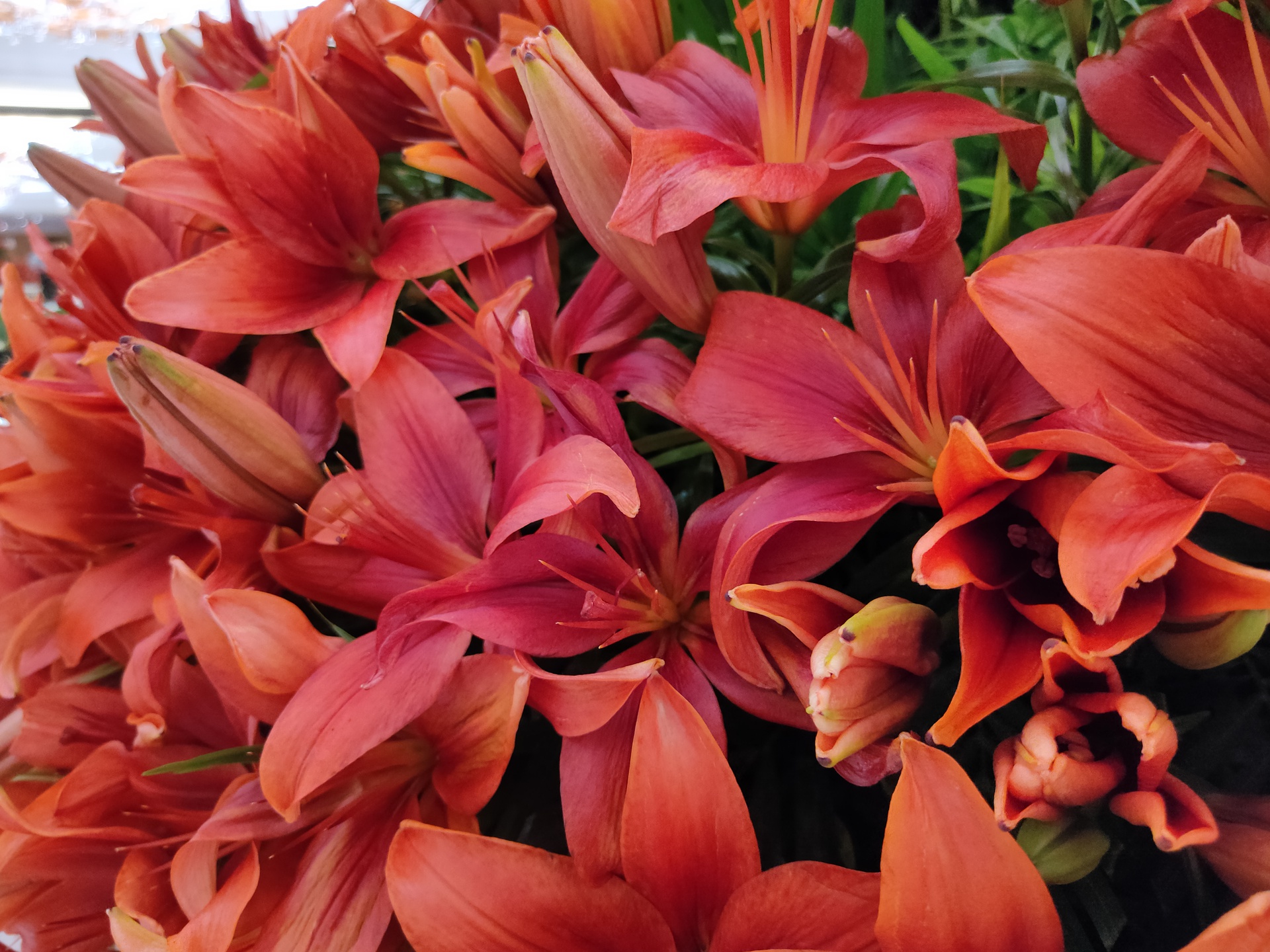 Realme XT standard mode Realme XT full resolution
Realme XT standard mode Realme XT full resolution 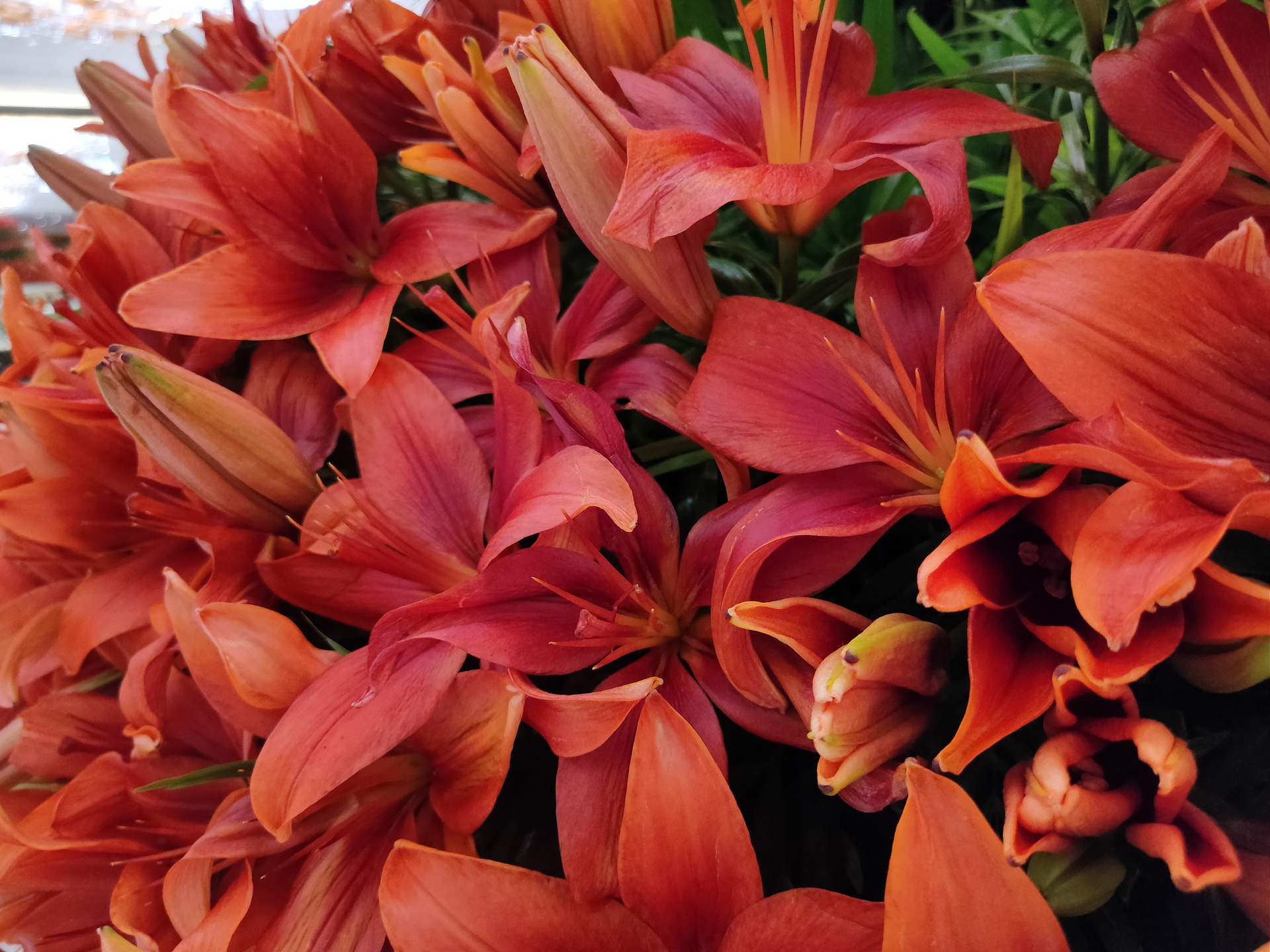
Let's talk about the full resolution 64MP mode for a bit. The GW1 sensor isn't really meant to be used at its full-resolution setting, but it can output 64MP images by using a demosaic algorithm. In our tests, we noticed little-to-no benefit in using the full-resolution shots. In fact, as soon as the light dropped, the 64MP images showed a noticeable increase in noise. I observed a slight difference in the color science used when shooting in the full resolution mode vs. standard shots, the latter displayed a boost in saturation. The difference, however, was minimal.
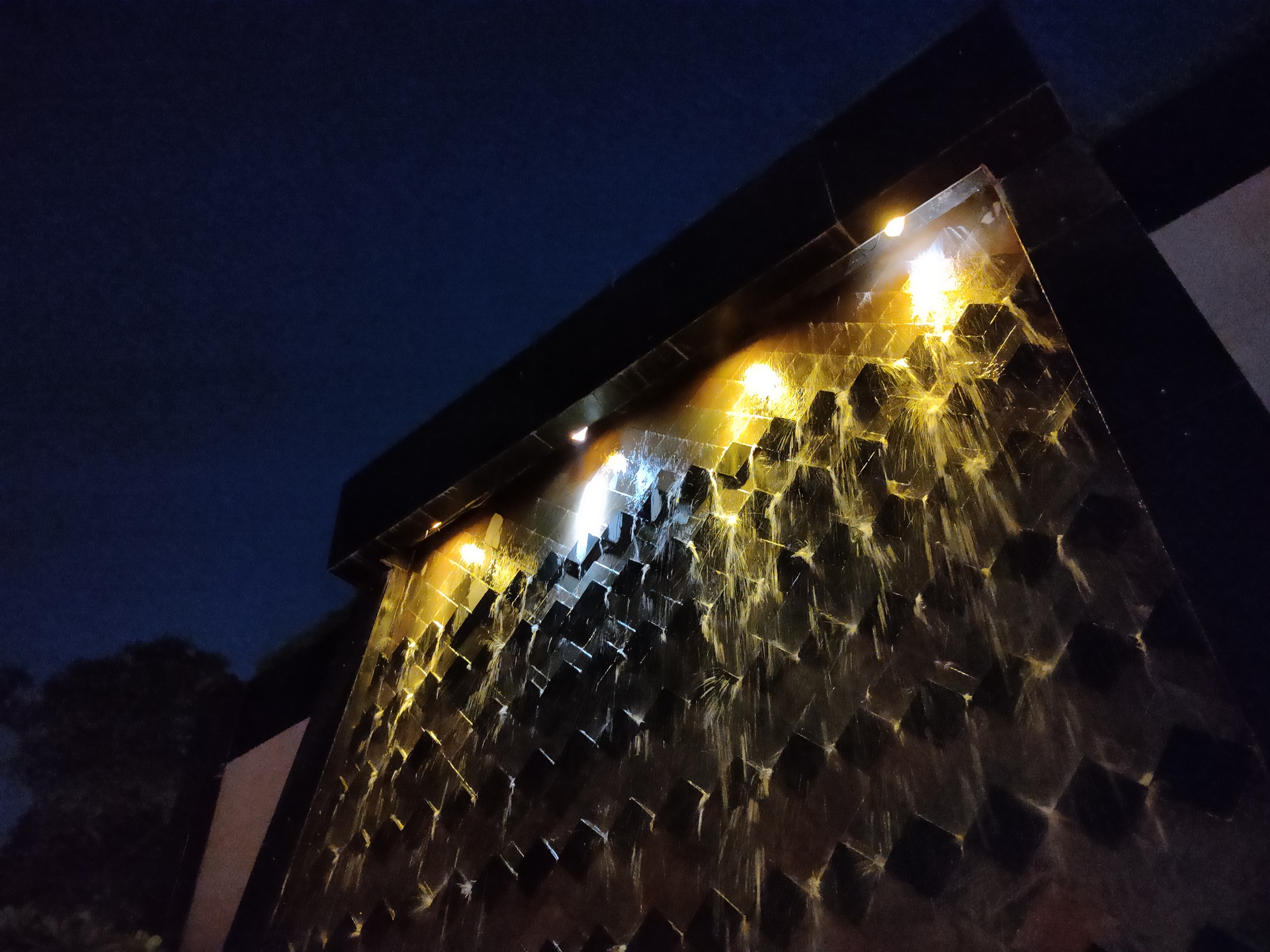 Realme XT pixel binned Realme XT full resolution
Realme XT pixel binned Realme XT full resolution 
As you can see in the samples, the full resolution mode displays a lot more noise than the standard image when shooting in poor lighting. For the huge increase in file sizes, I just don't see the point in making use of the 64MP mode.

The phone includes a serviceable night mode. It works by using a combination of image stacking and long exposures. As long as you've got a steady hand, you should be able to get a fairly good looking shot in poor lighting.
The macro mode, however, is utterly useless and I failed to get a even reasonably sharp image in all of my testing. If you really must, cropping a standard image will give you a better result. The phone has a dedicated portrait sensor as well. The Realme XT does a bang-up job at taking portrait shots. The bokeh fall-off is pretty realistic with perfectly usable edge detection. Similarly, the front facing camera takes good looking shots, with even lighting and a good amount of detail. You can take a look at full resolution image samples by clicking through here.
The Realme XT is capable of shooting 4K video at 30fps, while the 1,080p mode goes up to 60fps. EIS is available at 1,080p, but not at 4K resolution. I liked the video output from the Realme XT. Colors look great and the dynamic range is better than most mid-range hardware. Video shot in 1080p mode looks fantastic too, but there is a drop in bitrate when shooting 60fps video. While there's a definite advantage in terms of how smooth the footage looks, you can see traces of digital artefacts because of compression.
Realme has improved camera performance marginally with follow-up security updates. Additionally, with the latest OTA, the phone now has drastically improved Nightscape performance using the front camera.
Audio
- Headphone jack
- Single downward-firing speaker
- Bluetooth aptX, aptX HD, LDAC support
The Realme XT packs a headphone jack along the bottom edge that outputs clean and neutral audio. In our testing, the Realme XT's audio output was amongst the best we've seen from mid-rangers. If you plan to use your phone for listening to a lot of music, the Realme XT is a good option.
The speaker output, too, gets loud enough and has a fair amount of depth. Pushing the volume to the max creates a bit of distortion. There is a mid-range emphasis and vocals shine through when listening to music over the speakers.
High-quality wireless audio is also available thanks to support for aptX and aptX HD via Bluetooth.
Specifications
| Realme XT | |
|---|---|
| Display | 6.4-inch, Super AMOLED 2,340 x 1,080 resolution Gorilla Glass 5 |
| Chipset | Qualcomm Snapdragon 712 |
| GPU | Adreno 616 |
| RAM | 4/6/8GB LPDDR4X |
| Storage | 64/128GB UFS2.1 |
| MicroSD | Yes (dedicated slot alongside two dedicated SIM slots) |
| Battery | 4,000mAh 20W charging |
| Cameras | Rear: 64MP at f/1.8 8MP Ultra-wide camera (119 degrees) 2MP macro camera 2MP depth sensor Front: 16MP |
| IP Rating | N/A |
| Headphone jack | Yes |
| Security | In-display fingerprint sensor |
| Software | ColorOS 6.0.1 Android 9 Pie |
| Dimensions | 158.7 x 75.16 x 8.55mm |
| Weight | 183g |
Value for the money
- Realme XT: 4GB RAM, 64GB storage — 15,999 rupees (~$225)
- Realme XT: 6GB RAM, 64GB storage — 16,999 rupees (~$240)
- Realme XT: 8GB RAM, 128GB storage — 18,999 rupees (~$267)
The Realme XT offers tremendous value for the money. In fact, you'd be hard pressed to find a better deal in the mid-range space. The phone is a series of constant checkmarks in terms of design, performance, and, for the most part, camera performance. Sure, battery life isn't class leading, but it is not bad at all.

I like the fact that Realme is sticking to a general design language across its hardware line up. The company upped build quality on the XT by switching over to a glass back. Additionally, Realme has priced the hardware to move. Starting at Rs. 15,999, the phone falls in lockstep with the price point of Xiaomi's very popular Redmi Note 7 Pro.
Since the time of release, Xiaomi has introduced the Redmi Note 8 Pro which ups the ante as far as design and imaging capabilities are concerned. However, Realme's own new Realme X2 is turning out to be a bigger competitor for the XT. For just a little more money, you get a much more powerful device that improves on the Realme XT in meaningful ways.
Realme XT review: The verdict
The Realme XT is a very good device. Between the competent internals, fetching design, and the all-new camera, it is one of the best mid-rangers in the market right now. It isn't perfect, but few phones are. Realme has been pretty good with pushing out quality-of-life updates to hardware, and if the company sticks to it, you can expect image quality to improve further.
Now that the Realme X2 is out, the Realme XT isn't quite a straightforward recommendation. While it remains an excellent choice, it is the Realme X2 that would win out as one of the best smartphones under 20,000 rupees in India.
from Android Authority https://ift.tt/3486Utw
via IFTTT


















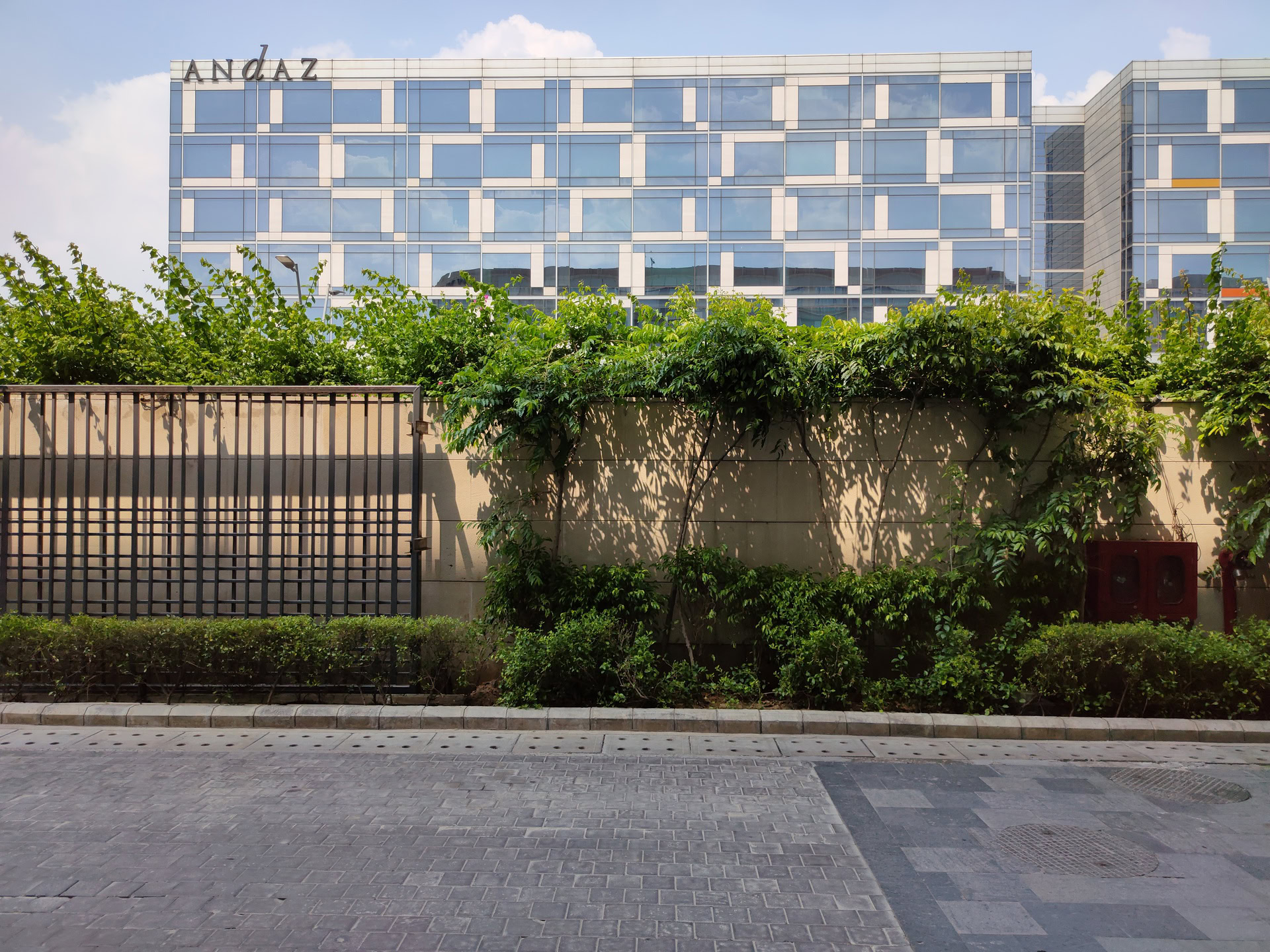

















Aucun commentaire:
Enregistrer un commentaire